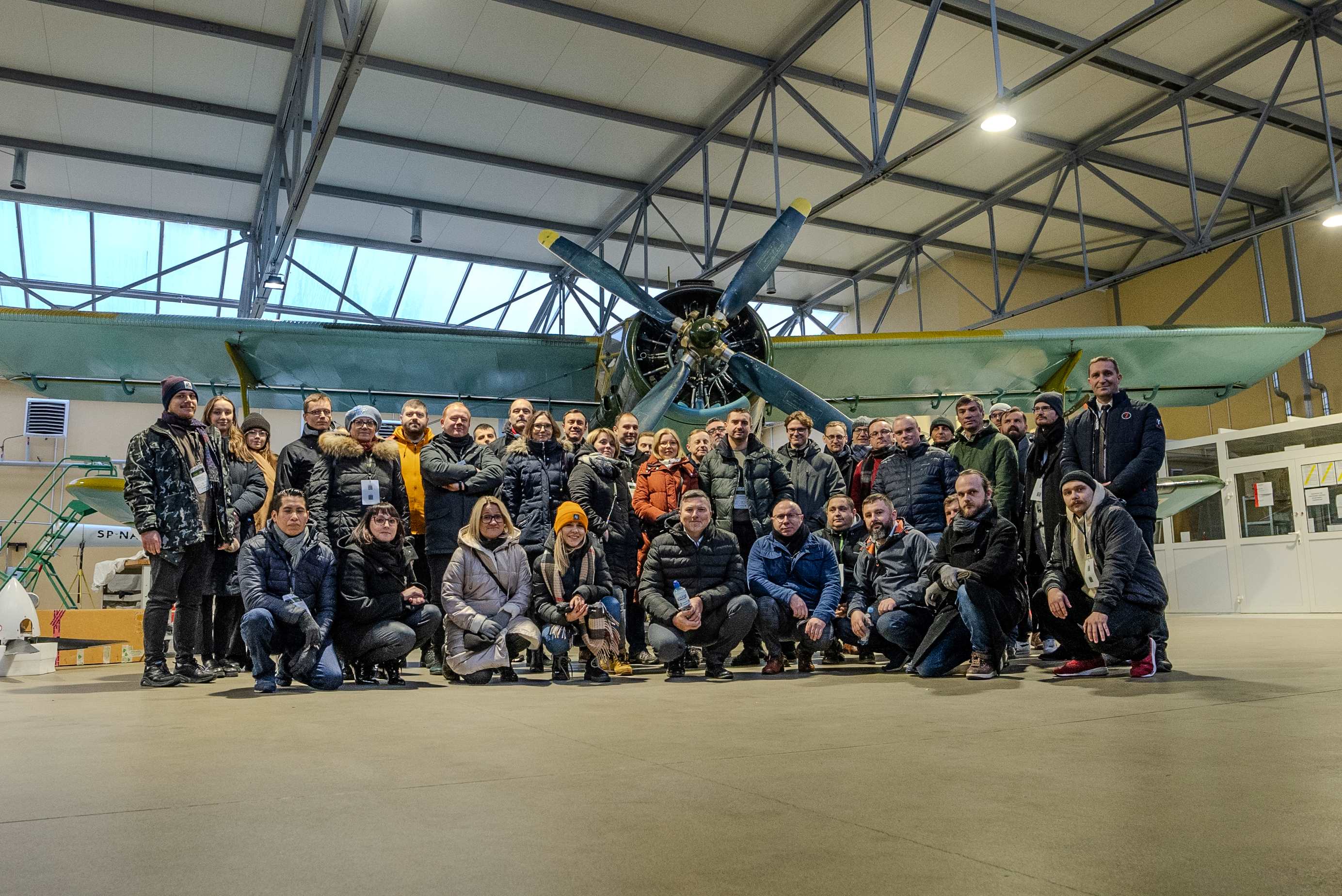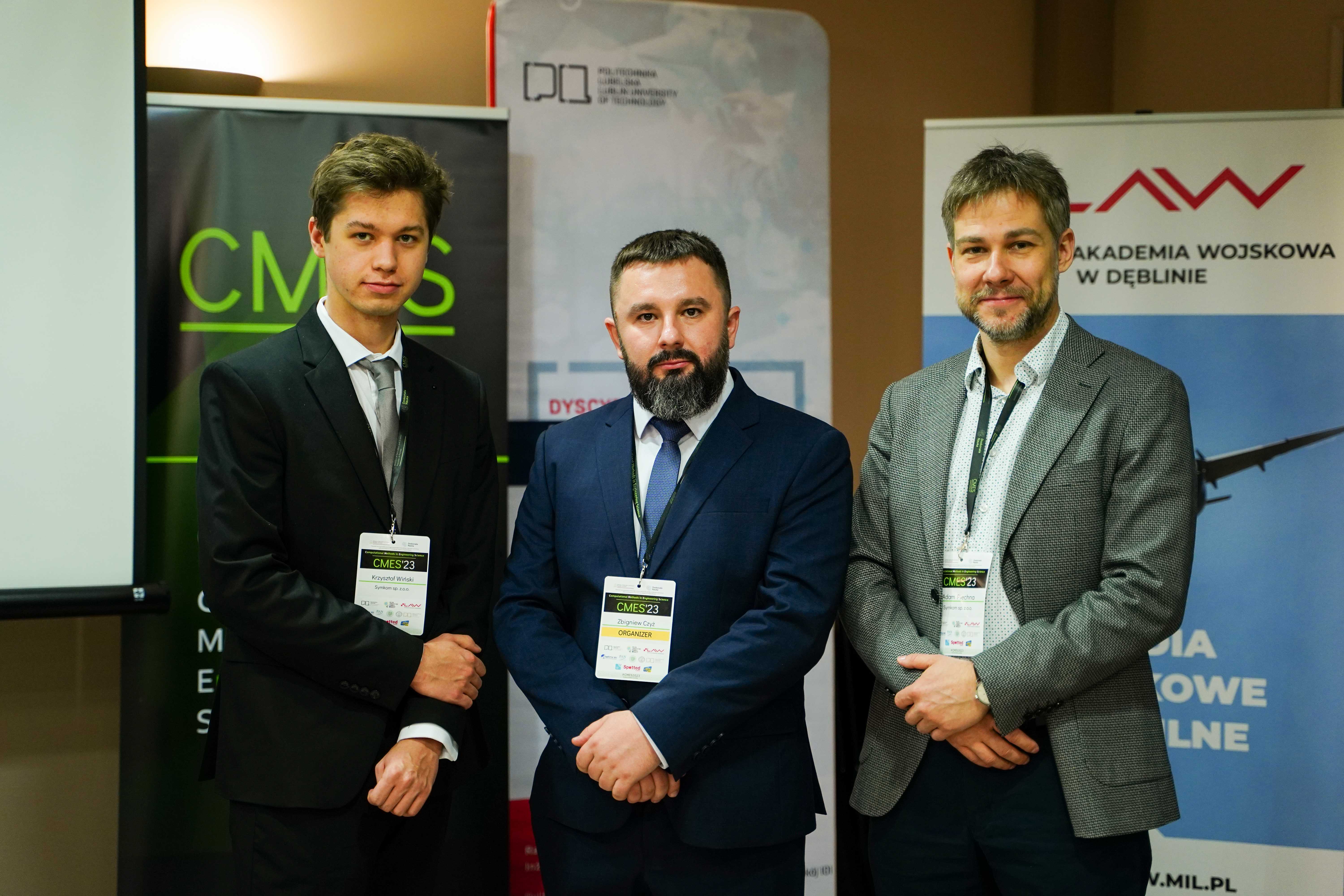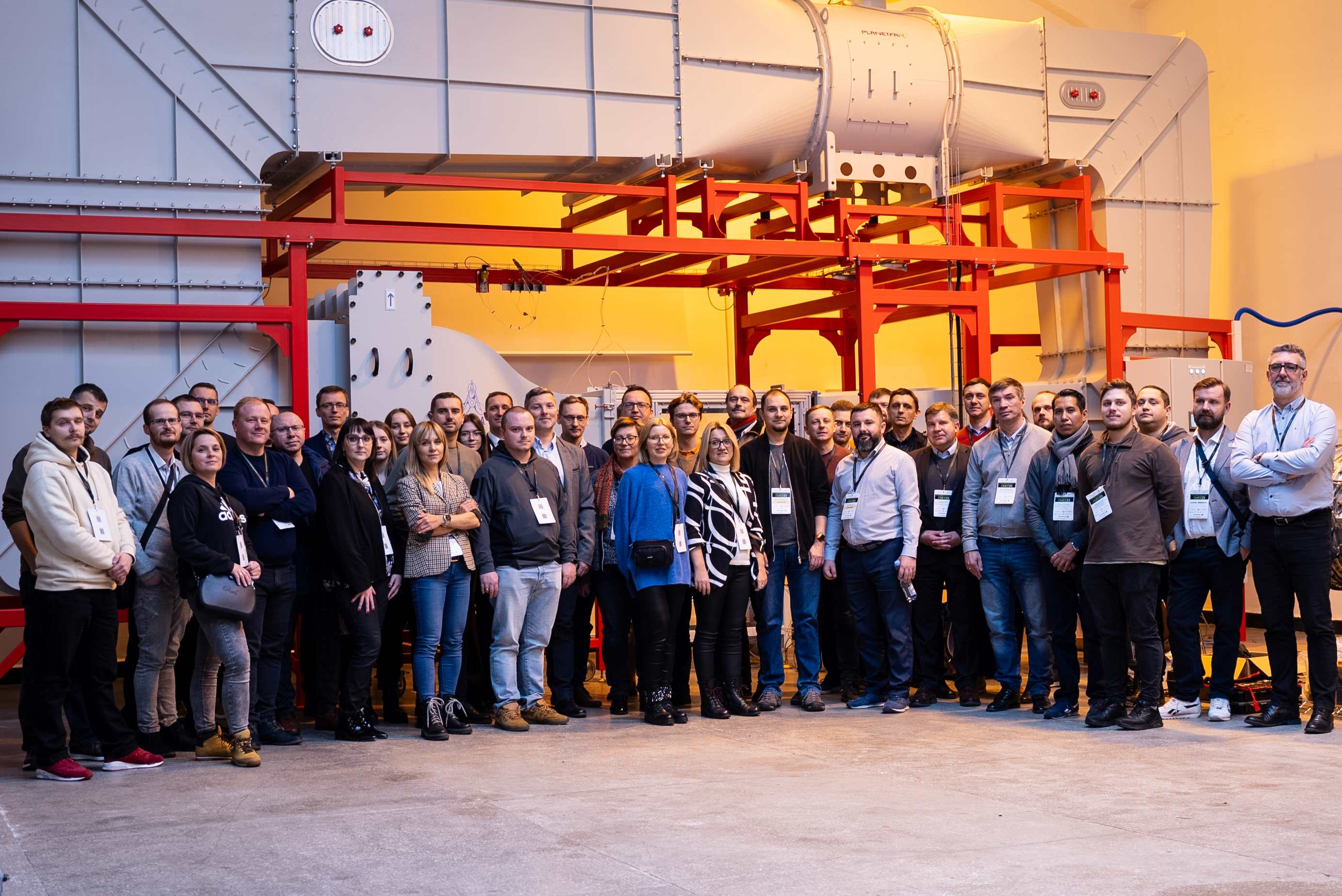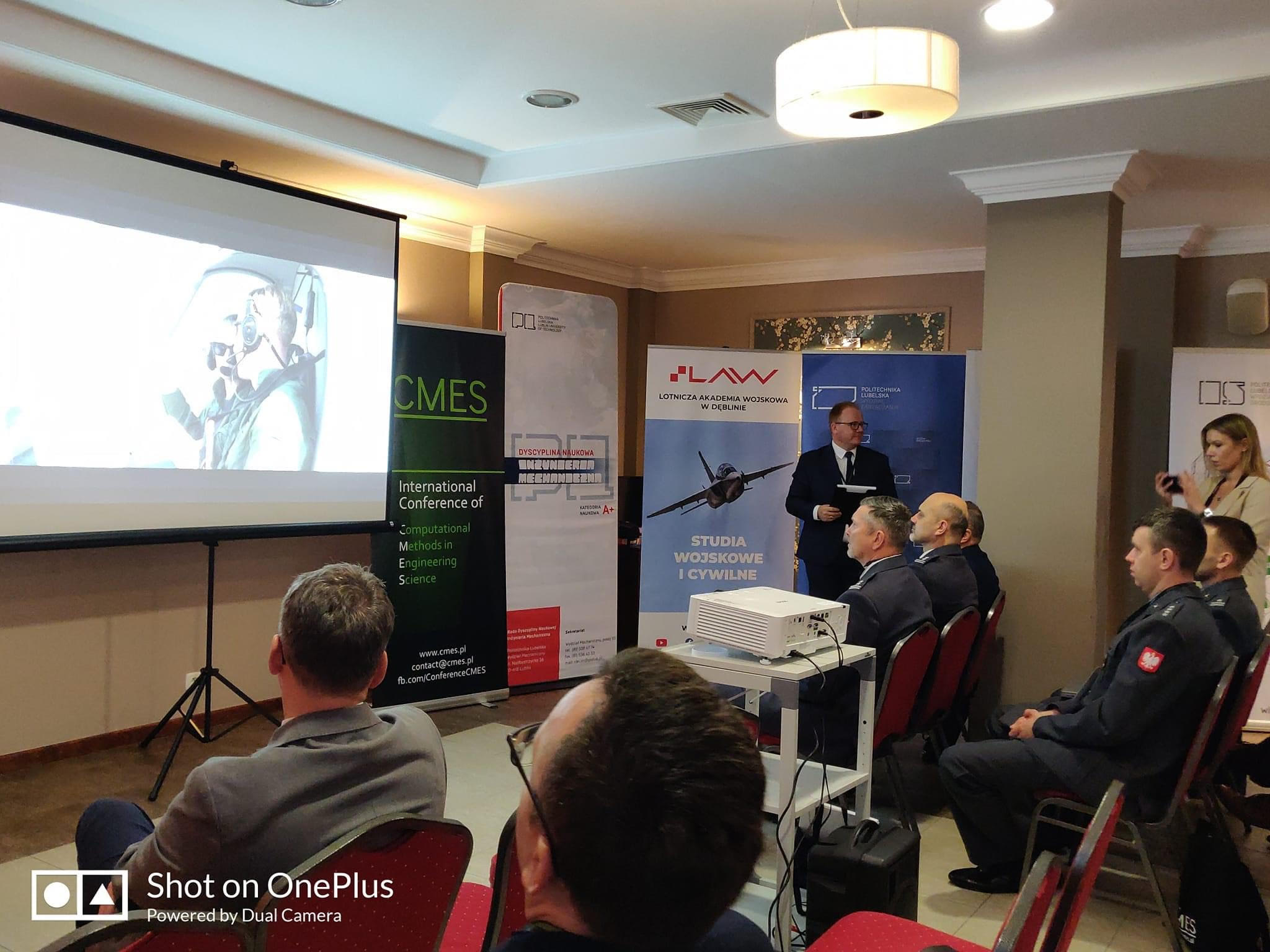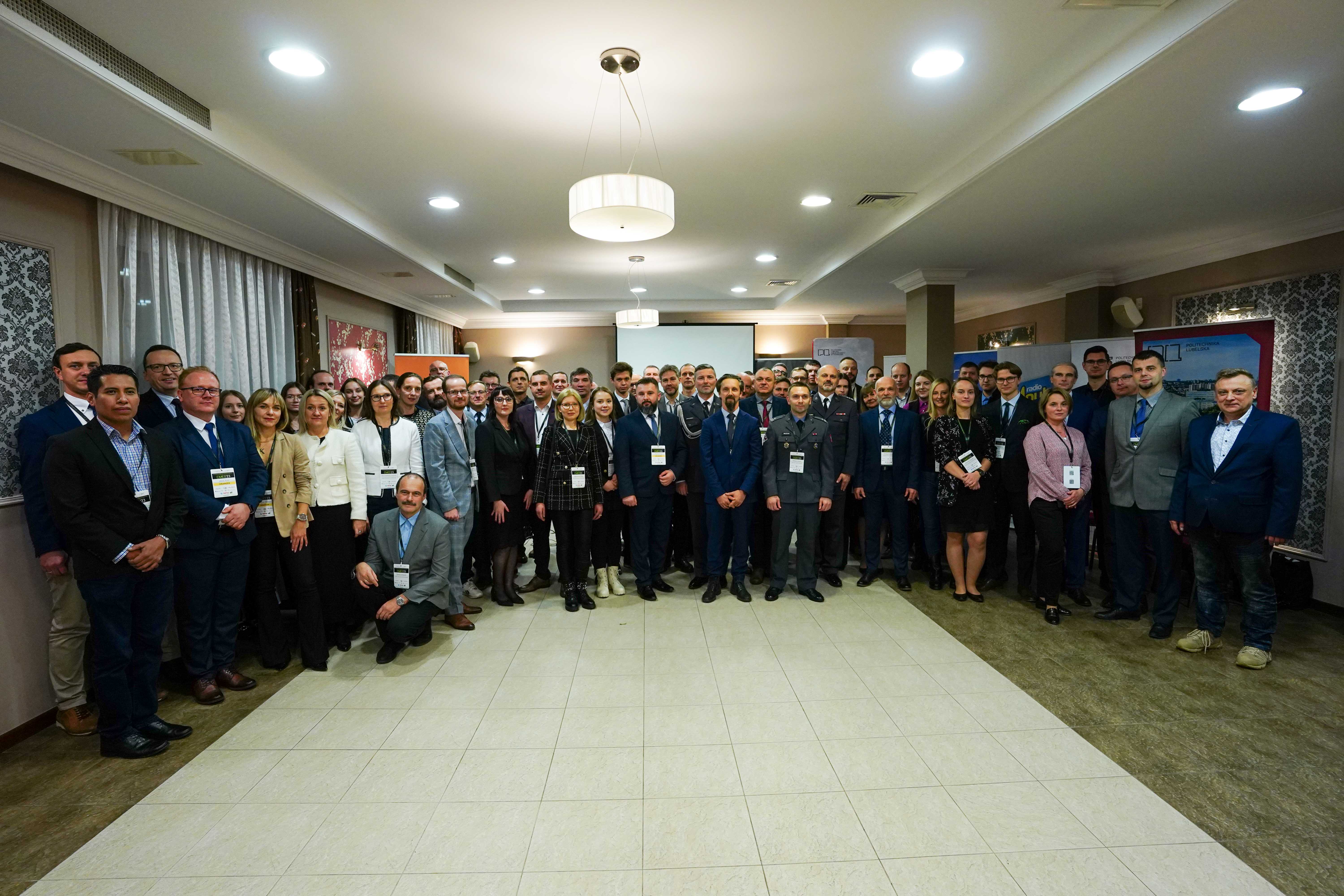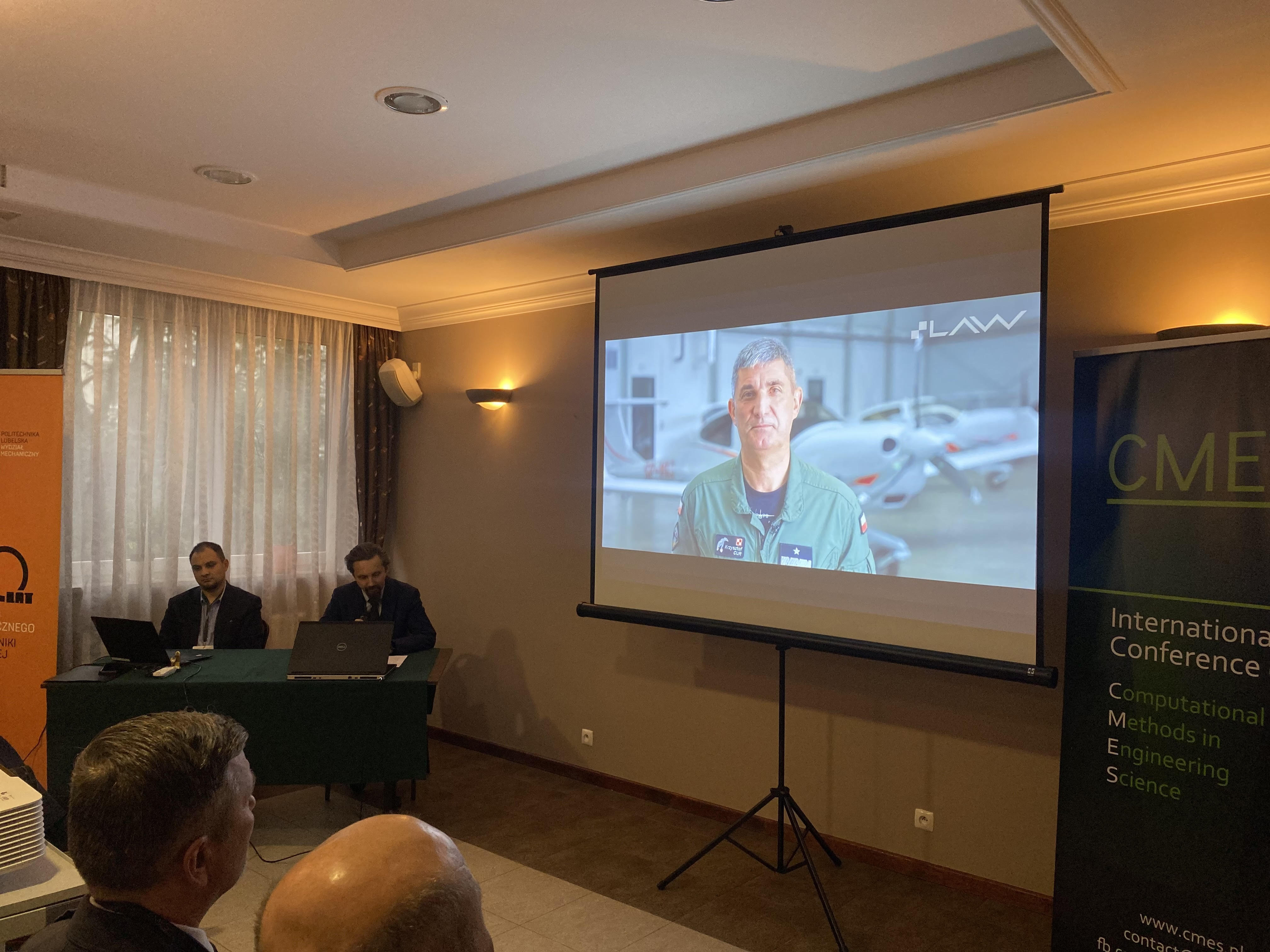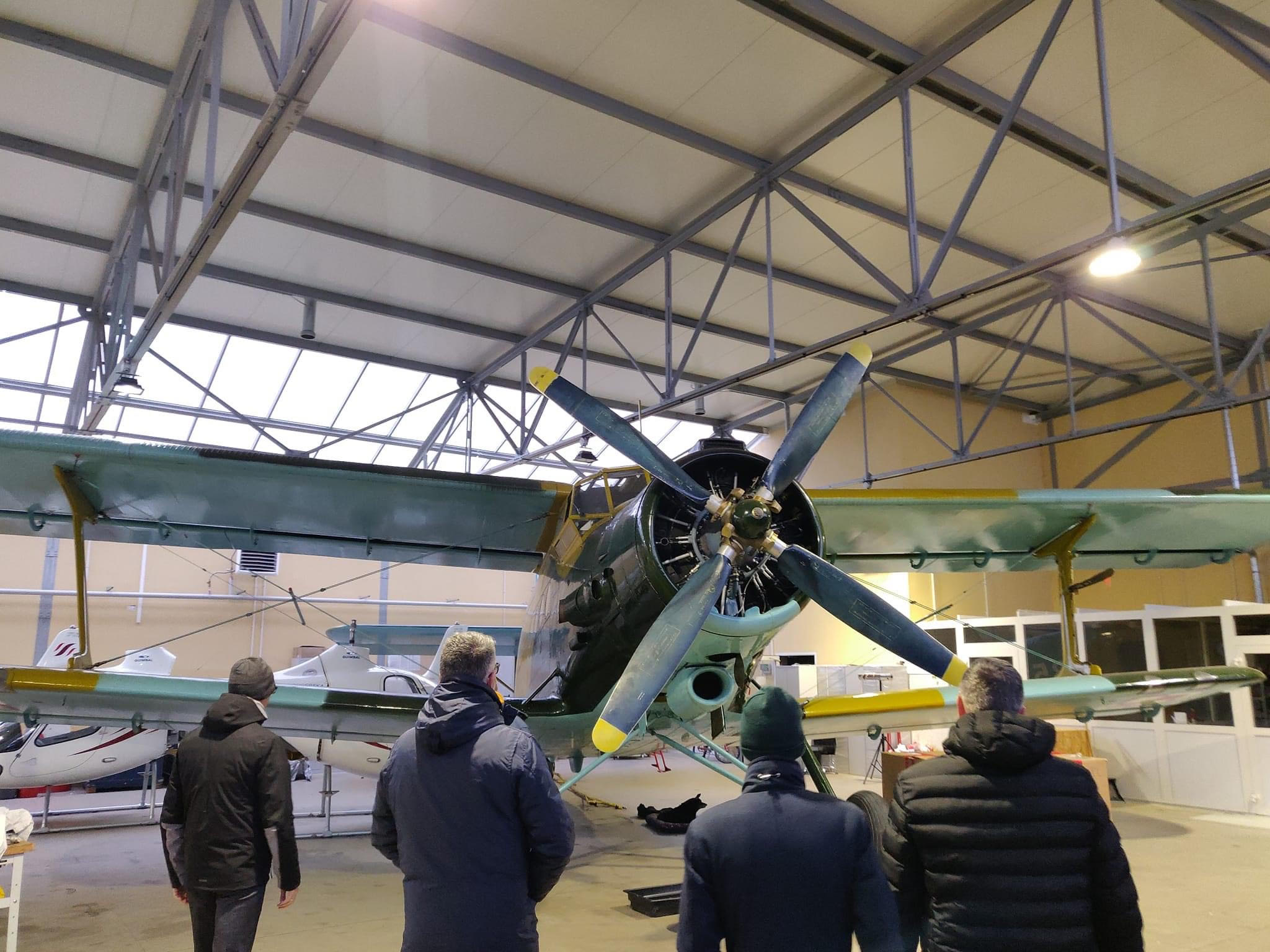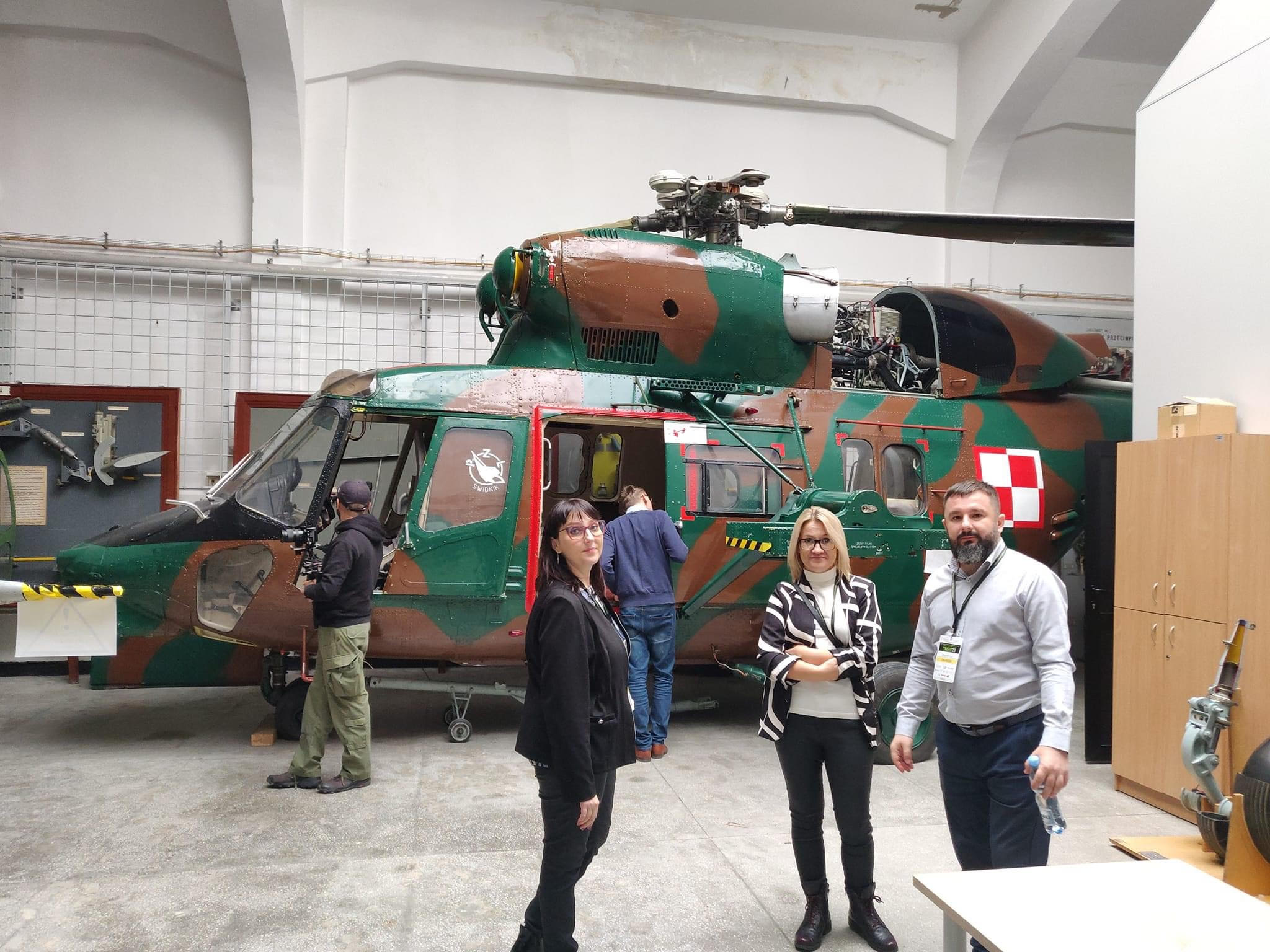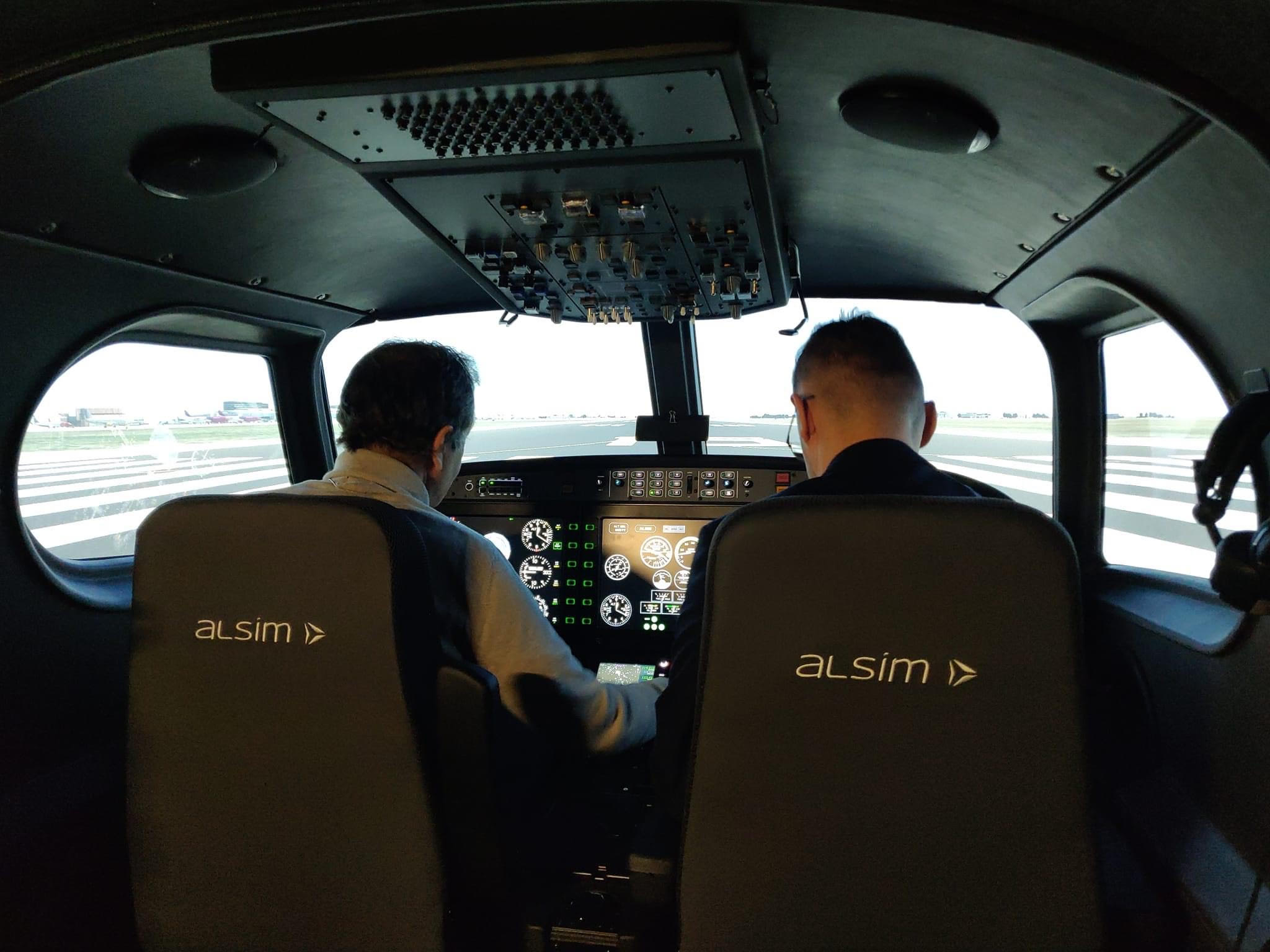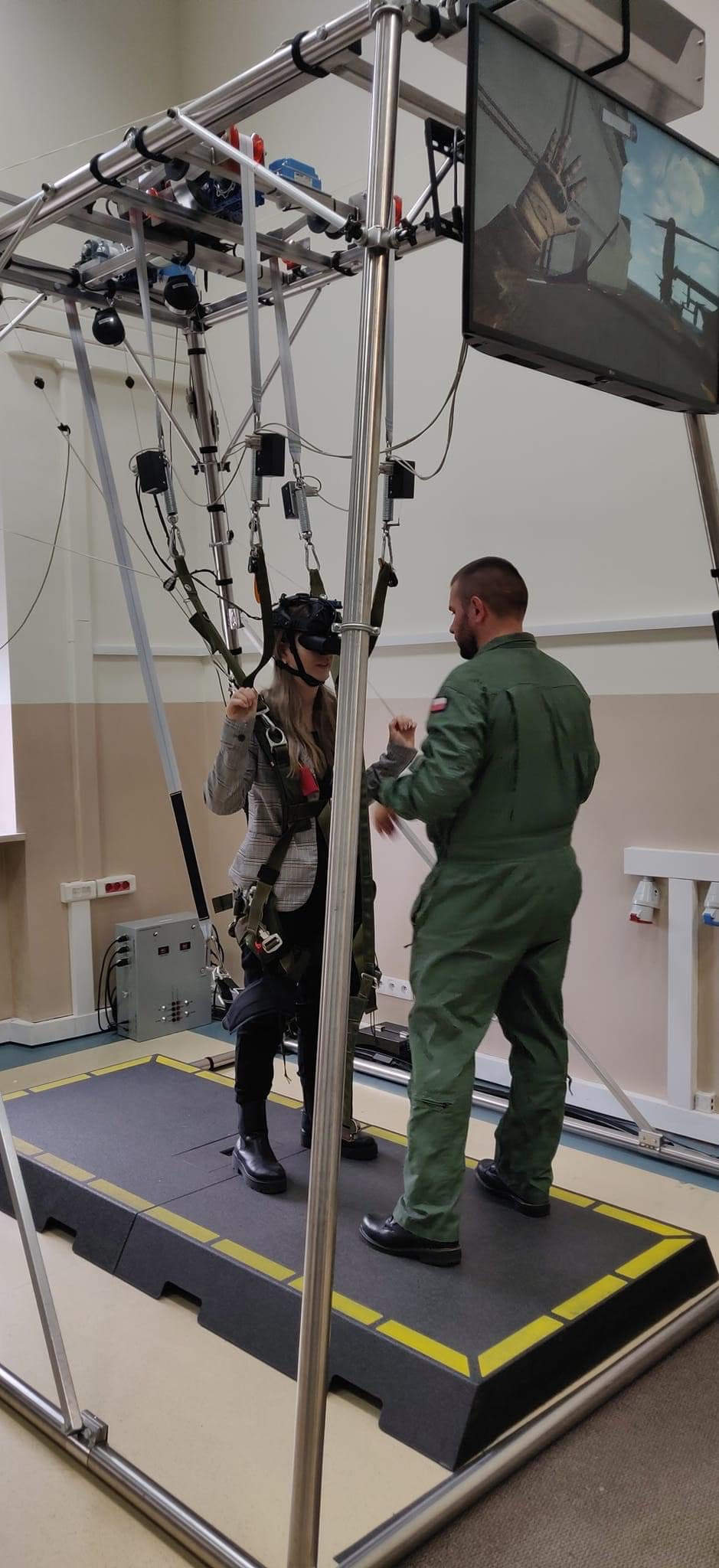
W dniach 23-24 listopada odbyła się VIII Międzynarodowa Konferencja Computational Methods in Engineering Science — CMES'23. Konferencję otworzył Prorektor ds. naukowych Lotniczej Akademii Wojskowej, dr hab. inż. Paweł Gołda, prof. LAW.
Głównym celem konferencji CMES był rozwój nauk inżynieryjnych, technik numerycznych i eksperymentalnych, poszerzenie doświadczeń i dobrych praktyk przez przedstawicieli środowiska naukowego i przemysłu. Konferencja umożliwiła wymianę wiedzy pomiędzy różnymi ośrodkami naukowymi krajowymi i zagranicznymi reprezentującymi różne dziedziny nauki i technologii inżynieryjnej.
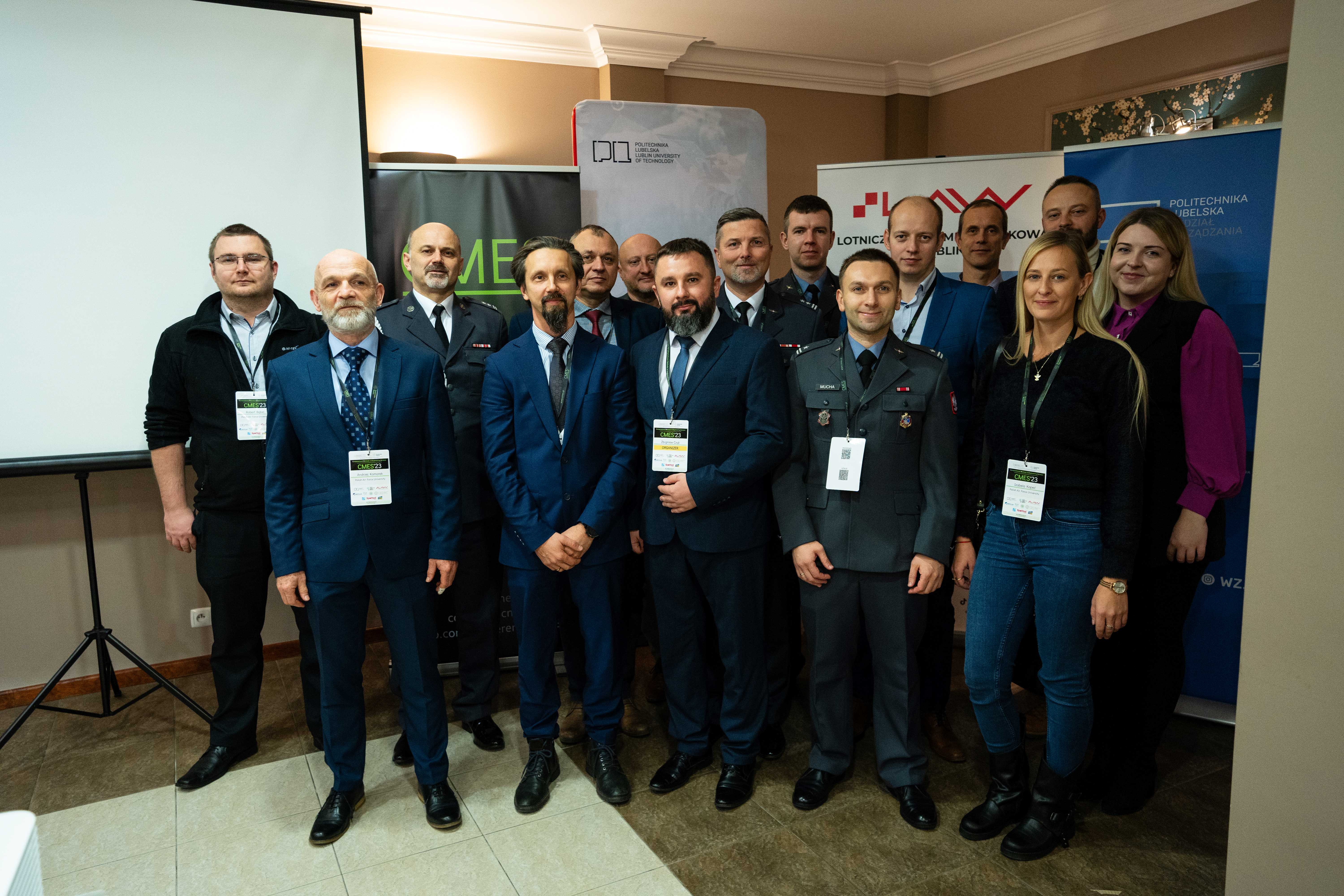
Na konferencji zostały poruszone m.in. poniższe zagadnienia:
Plenary Lecture:
- What do a vacuum cleaner, Hussarya and train travel have in common?;
- Embracing the Future with Digital Mission Engineering (DME);
- Non-destructive building moisture testing system based on electrical tomography and neural networks;
- Laser micro-texturing as a key technology for development of a new TBCs generation – a numerical and experimental approach;
- How the CosmoEye system meets the needs of manufacturing companies;
- Digital - precision and intelligent agricultural machinery and equipment as a response to climate challenges.
Panel Discussion:
- "ChatGPT - opportunities, threats, or maybe nonsense".
Session I “Computer simulations of processes and phenomena and analysis of engineering processe"
- Autonomous mobile robot implementation strategy to support intralogistics auxiliary processes using modern technologies of Logistics 4.0 – case study;
- Investigation on the limits of type 1 diabetes therapy automation using insulin pumps;
- Computational and experimental investigation of inert gas flow field in DMLM printer build chamber;
- Analysis of the impact of trailing-edge wing flaps on the aerodynamic characteristics and performance of the Tecnam P-2008JC aircraft;
- The influence of light Intensity on the operation of vision system in collaborative robot;
- Analysis of the applicability of thermal imaging measurements for early detection of arteriovenous malformations.
Session II “Application of computer programs in technology”
- REDUCE: A Python module for reducing inconsistency in multiplicative pairwise comparisons;
- Implementation of Type-2 Fuzzy Controller in Matlab Software;
- Comparison of software development solution implementations in Lightning Flow Builder and Apex programming language in Salesforce technology;
- Enhancing the efficiency of the Levenshtein distance based heuristic method of arranging 2D apictorial elements for industrial applications.
Session III “Material properties and structure research methods”
- Tests of the adjustable support system in order to eliminate the causes of operational damage;
- Effects of thickness of the corn seed coat on the strength of processed biological materials;
- Numerical study of the natural oscillations of perforated vibrating surfaces with holes of complex geometry;
- Infrared sintering of various nanosilver inks in aerosol jet printing.
Session IV “Finite Element Method (FEM) and Computational Fluid Dynamics (CFD)”
- Numerical study of the energy absorption performance of 3D printed sandwich structures;
- Evaluation of density fields of numerical analysis output of solid carbon dioxide extrusion process;
- The possibility of using the Finite Element Method for determining thermal diffusivity on the example of nickel using the classic and the modified pulse method;
- CFD studies of a wind vertical axis turbine with a variable swept area.
Poster session:
- Application of open source geo-informatics technologies for the analysis of stormwater drainage basin areas;
- Application of entropy based analysis for evaluation of algal community structure influenced by stormwater system;
- Research on the distribution of axial excitation of mobile overpressure fans in the aspect of stability safety of the load-bearing frame;
- An application of orifice hydrodynamic cavitation reactor for tertiary treatment of wastewater treatment plant effluents;
- The impact of applying universal design principles on the usability of online accommodation booking websites;
- Prediction tools as an element aiding decision processes at an airport – The case of Facebook Prophet library;
- Accessibility assessment of visual programming tools for novice programmers - The case of App Inventor, Scratch and StarLogo;
- A comparative analysis of image segmentation using classical and deep learning approach;
- Influence of deposition parameters on properties of coatings made by plasmapowder PTA method;
- Analysis of the possibility of using neural networks to monitor the technical efficiency of diesel engines during operation;
- Efficiency comparison of networks in handwritten Latin characters recognition with diacritics;
- Computational analysis of PEM fuel cell under different operating conditions;
- Application of deep learning neural networks for automatic image analysis in microscopic studies of activated sludge;
- The influence of pressure in the infusion method upon mechanical properties of polymer composites;
- Surface characteristics and corrosion resistance of 316L stainless steel after different shot peening parameters;
- Dual attention graph convolutional neural network to support mocap data animation;
- Simulation model of a patient with type 1 diabetes using fuzzification;
- Accelerations caused by underwater explosions on the naval gun foundation;
- Tribology characteristics of heatproof alloys at a dynamic pin ladening in the variable temperature field;
- The influence of the laser cutting process parameters on the quality of the cut edge;
- Experimental determination of material boundary conditions for computer simulation of sheet metal deep drawing processes;
- Analysis of the potential for reducing the energy consumption of a vegetable sprouts production using Flownex Simulation Software;
- Numerical calculations of water drop using a firefighting aircraft;
- Estimating the size of a crater after an underwater explosion;
- Computational fluid dynamics analysis of an influence of icing on airfoil aerodynamic characteristics;
- Using fuzzy logic to make decisions based on data from Customer Relationship Management systems;
- Cavitation erosion of NiCoCrAlFeTi highentropy alloys containing different additions of titanium;
- Analysis of the mechanical properties of quail femur under impact loading condition;
- Strength analysis aspects of psyllium husks/thermoplastic starch films under impact loading conditions;
- Impact damage tolerance of multilayer epoxy-glass composites with XPS core and polyurethane prepolymer modified matrix;
- Quantitative and qualitative analysis of surface runoff from the exemplary rest area (RA);
- Effect of bond end shape on CFRP to steel joint strength under the fatigue load;
- Corrosion resistance of heat treated 17-4PH steel fabricated using DMLS technology;
- Modification of 42CrMo4 steel hardness via heat treatment;
- The use of cluster analysis to assess the wear resistance of cermet coatings sprayed by HVOF on magnesium alloy substrates;
- Research of electrical parameters of startup process of single-cylinder diesel engine;
- Characterizing sawdust fractional composition from oak parquet woodworking for briquette and pellet production;
- Stress relaxation in sugar beet root under various mechanical load conditions;
- Aerodynamic performance of the XGyro hybrid unmanned aerial vehicle - a numerical investigation;
- Prediction of river salinity with artificial neural networks;
- Numerical study of the strength of the pylon designed for the unmanned helicopter;
- Failure study of compressed thin-walled plate element with mechanical couplings;
- Implementation of PID autotuning procedure based on doublet-pulse method in PLC controller;
- The influence of conditioning on dynamic behaviour of polymer composite;
- Investigation of carbon nanotube particles addition effect on the dispersed composite structure thermal diffusivity.
Organizatorami konferencjii byli: Katedra Termodynamiki, Mechaniki Płynów i Napędów Lotniczych, Katedra Podstaw Inżynierii Maszyn i Mechatroniki, Katedra Inżynierii Materiałowej (Wydział Inżynierii Mechanicznej Politechniki Lubelskiej), Katedra Informatyki (Wydział Elektrotechniki i Informatyki Nauk ścisłych Politechniki Lubelskiej), Katedra Organizacji Przedsiębiorstwa (Wydział Zarządzania Politechniki Lubelskiej), Katedra Inżynierii Energii Odnawialnej oraz Katedra Przekształcania Biomasy i Odpadów w Biopaliwa (Wydział Inżynierii Środowiska Politechniki Lubelskiej), oraz Katedra Płatowca i Silników (Wydział Lotnictwa Lotniczej Akademii Wojskowej).
 PL
PL  EN
EN 
